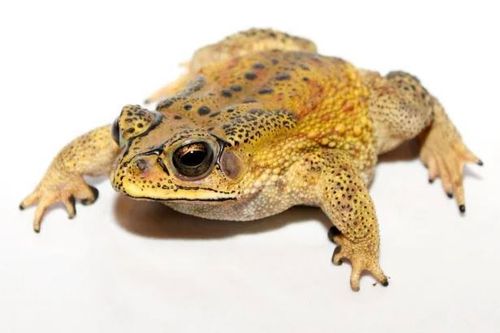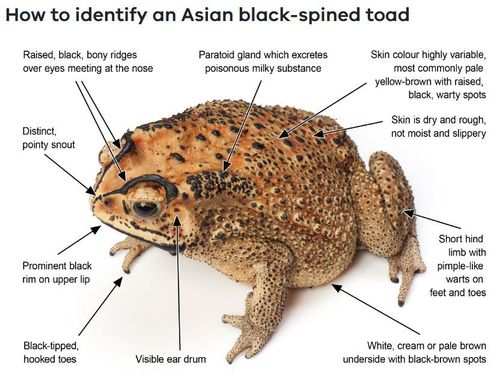The Asian black-spined toad, which has been compared to Queensland’s hazardous cane toad, was discovered on the Djerring Trail in Huntingale on Boxing Day.
The toads are widespread throughout south-east Asia, including Bali, Thailand and Papua New Guinea, and can have disastrous affects on Australia’s natural habitat.

The discovery is the 18th Asian black-spined toad finding in Victoria since 1999, Agriculture Victoria Biosecurity Manager Adam Kay said.
The toads produce a poisonous milky substance and can cause serious illness or death in native species and domestic pets which may attempt to prey on them.
The milky toxin has a pungent odour and may cause itching in the nose and eyes when handled by humans.
The consumption of Asian black-spined toad skin or eggs can cause serious illness or even death.

These are the best wildlife photos of the year
“They do not naturally occur in the wild within Australia, however, the species is frequently intercepted at Australian borders in shipping containers and in personal luggage as stowaways,” he said.
“They are poisonous, and compete with native species for food and habitat, with the potential to cause environmental impacts like those of the cane toad in Queensland.”

The toad was in poor condition when discovered and has since died and been disposed of to minimise biosecurity risks.
Kay said there was now a focus on determining how the pest came to be in Melbourne.
“This is a serious biosecurity threat,” he said.
“We are seeking help from Huntingdale residents and business owners who may have information on how this road came to be in the community.”
The toads can breed up to twice each year, with females producing up to 40,000 eggs per cycle.








